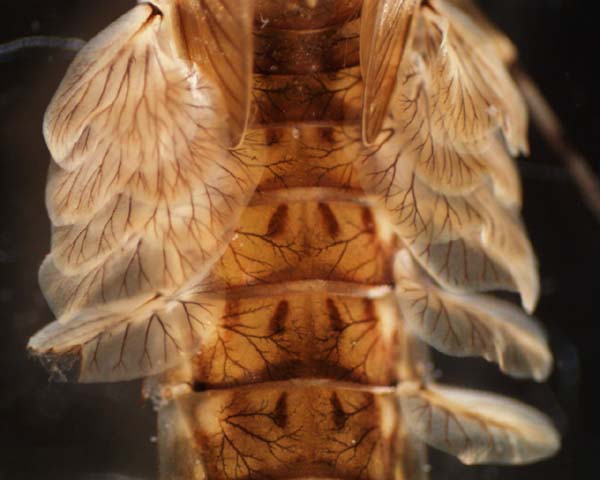
THE XERCES SOCIETY FOR INVERTEBRATE CONSERVATION Aquatic Invertebrates in Pacific Northwest Freshwater Wetlands |
| Identify taxa |
Siphlonuridae |
|||
|
The primitive minnow mayflies in the Pacific Northwest are primarily lentic, living in lakes, ponds, and wetlands. Siphlonurids are thought to be primarily collector-gatherers, but may also scrape diatoms from rocks, shred leaves, or even prey on midges in pools. Primitive minnow mayflies are very similar to the Ameletidae. Until recently, the single genus in Ameletidae was considered a siphlonurid, but it was put into its own family because it had two characters that were quite distinctive from the rest of the Siphlonurids: a row or comb of spines on its maxillae, and a dark line on the outer edge of its gills. Primitive minnow mayflies lack both of these characters. Because they serve as a prototype for minnow mayflies, most of the characters that identify the Siphlonurids are actually an absence of characters seen in other families. They don't have a comb of hairs on their mouthparts or darkened gill margins as mentioned above. All their claws are similar in size (sometimes the front claws are shorter) and are not inordinately long or thin. They do not have a notch in their labrum, and all cerci are about the same size. They don't have a fringe of long hairs on the inner margin of their front legs, and their antennae are not long. Their gills do not end in points or forks, and their bodies are not flattened from top to bottom. |
|
Size: medium to large Identifying feature(s): body is minnow-like, antennae less than twice the width of the head; mouthparts lack a comb of spines; gills lack a dark band on the outer edge; the front legs don't have rows of long hairs on the inner margin; claws are similar on all legs. Habitat: lakes, ponds, wetlands |
 |
|
© 2007 Xerces Society
Contact info@xerces.org


